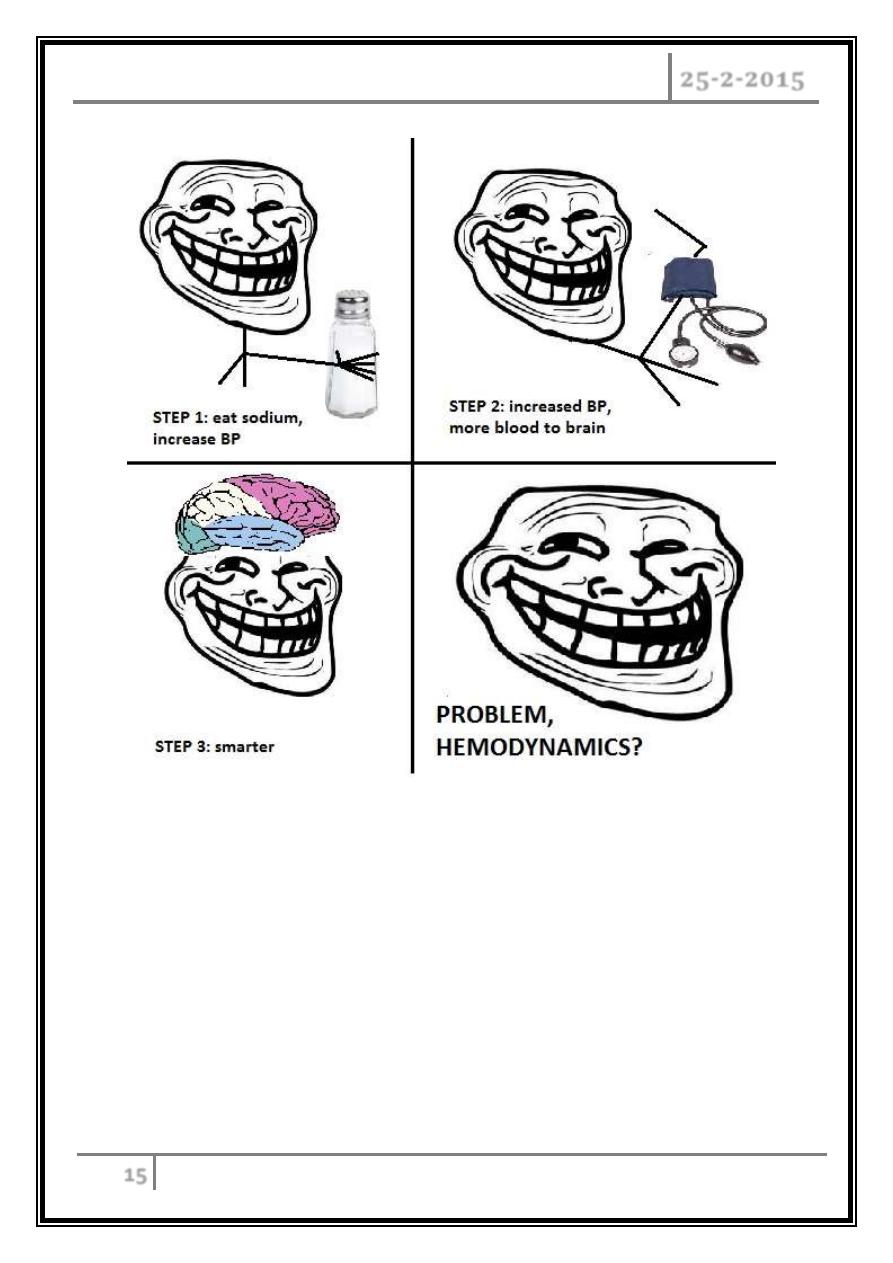
Dr. Mohammed Waheeb
Lec. 2
Rheumatic fever
Wed
25 / 2 / 2015
2014 – 2015
ﻣﻜﺘﺐ ﺍﺷﻮﺭ ﻟﻼﺳﺘﻨﺴﺎﺥ

RHEUMATIC FEVER Dr. Muhammed Waheeb
25-2-2015
1
Rheumatic Fever
Definition:
it is an immune complex disease affecting mainly connective tissue of
heart, joint, brain and the skin.
Epidemiology
Rare in developed world.
Still common in developing countries.
Peak incidence ~5-15yr.
ARF (acute rheumatic fever) is a major problem in the high-risk areas of the
tropics, in countries with limited resources, and in communities with minority
indigenous populations.
In those less developed nations, post ARF heart disease is the most commonly
acquired heart disease in hospitalized children, adolescents, and young adults. In
some areas, the incidence of this entity exceeds that of congenital heart disease.
Rheumatic fever
causes a chronic progressive damage to the heart and its
valves. Until 1960, it was a leading cause of death in children and a common cause of
structural heart disease. The disease has been known for many centuries. Baillou
(1538-1616) first distinguished acute arthritis from gout. Sydenham (1624-1668)
described chorea. In 1812, Charles Wells associated rheumatism with carditis and
provided the first description of the subcutaneous nodules.

RHEUMATIC FEVER Dr. Muhammed Waheeb
25-2-2015
2
The connection with scarlet fever was made in the early 1900s. In 1944, the
Jones criteria were formulated to assist disease identification. These criteria, with
some modification, remain in use today. The introduction of antibiotics in the late
1940s allowed for the development of treatment and preventive strategies.
Sex
No sex predilection exists, except that Sydenham chorea occurs more often
in females than in males.
Age
Although individuals of any age group may be affected, most cases are
reported in persons aged 5-15 years.
Patterns of presentation of ARF
The first pattern is a sudden onset, begins as polyarthritis 2-6 weeks after
streptococcal pharyngitis, and is usually characterized by fever and toxicity.
If the initial abnormality is mild carditis, ARF may be insidious or subclinical.
Causes
This auto immune disease follow throat infection with group A-Beta hemolytic
streptococci (Rheumatogenic strain) by about 2-3weeks
ARF has been linked definitively with a preceding streptococcal infection,
usually of the upper respiratory tract.

RHEUMATIC FEVER Dr. Muhammed Waheeb
25-2-2015
3
Predisposing factors
over crowding
poor housing
bad ventilation
low socioeconomic standard
Pathogenesis
2 mechanisms:
First:
Releasing toxins that causes damage to connective tissue ---> release auto
antigens in to circulation ---> stimulation of body to form and release auto antibodies
against this connective tissue ---> causing rheumatic lesion
Second
Cross reaction … these strains possess an antigen immunologically similar to
that in heart connective tissue so produced antibodies against streptococci can react
with the heart.

RHEUMATIC FEVER Dr. Muhammed Waheeb
25-2-2015
4
Pathophysiology
ARF is a sequela of a previous
group A streptococcal infection
, usually of the
upper respiratory tract. One beta-streptococcal serotype (e.g. M types 3, 5, 18, 19,
24) is linked directly to ARF.
Evidence is very strong that the M protein in certain streptococci subtypes is
responsible for antigenicity.
Non–group A streptococci has never been shown to cause this disease.
The disease involves the heart, joints, central nervous system (CNS), skin, and
subcutaneous tissues. It is characterized by an exudative and proliferative
inflammatory lesion of the connective tissue, especially that of the heart,
joints, blood vessels, and subcutaneous tissue.
Pathology
A fibrinoid degeneration affecting connective tissue with an inflammatory
oedema.
Aschoff’s nodules: paravascular nodules, consist of a center of fibrinoid
degeneration surrounded with Aschoff's giant cells, lymphocytes and
fibroblasts.

RHEUMATIC FEVER Dr. Muhammed Waheeb
25-2-2015
5
Clinical picture
A patient has a history of recent streptococcal infection 2-3 weeks ago as
(tonsillitis- pharyngitis -scarlet fever).
Rheumatic manifestations are divided into major and minor criteria:
Major criteria
Carditis
Arthritis
Chorea
Subcutaneous nodules
Erythema marginatum
Minor criteria
o Clinical:
Fever, arthralgia.
o Laboratry:
Acute phase reactants (leukocytosis, increased ESR, C- reactive protein),
prolonged PR interval.

RHEUMATIC FEVER Dr. Muhammed Waheeb
25-2-2015
6
Rheumatic carditis (pan carditis)
Involves all layers of the heart:
Endocarditis:
affects valves mainly:
mitral valvitis (70%)
Stenosis: early due to inflammatory oedema. Leading to a mid-diastolic
rumbling murmur over apex and localized with accentuated S1.
Incompetence: due to destruction and deformity of the valve. Leading to a
pansystolic blowing murmur over apex and propagated to axilla with
muffled S1.
Aortic valvitis
Incompetance: due to destruction and deformity of the valve. Leading to an
early diastolic soft murmur over aortic area and propagated to apex.
Myocarditis:
Tachychardia, not proportional to the fever and continuous with sleep.
Myocardial dilatation, poor quality heart sounds.
Prolonged PR interval.
Heart failure.
Arrhythmia.

RHEUMATIC FEVER Dr. Muhammed Waheeb
25-2-2015
7
Pericarditis:
Dry
Pain: stitch-like and localized.
Pericardial rub: superficial, scratchy, heard near to sternum and not
related to respiration.
Effusion
Increase cardiac dullness.
Distant heart sounds.
Rheumatic arthritis
Affecting big joints (knee-ankle-elbow) 2 or more joints.
Migratory with signs of inflammation (red, hot, swollen, and limitation of
movement).
Fleeting arthritis migrate from one to the other joint.
Dramatic response to salicylates.
Rheumatic chorea (sydenham's chorea)
Common in females (8-12y).
It is due to involvement of basal ganglia in rheumatic process.
Its manifestations appear late.

RHEUMATIC FEVER Dr. Muhammed Waheeb
25-2-2015
8
3 MAIN MANIFESTATIONS:
1. Involuntary movement.
2. Hypotonia.
3. Emotional instability.
1)
Involuntary movement:
o Affecting face, limb, and tongue.
o Movement is involuntary, sudden, and jerky.
o Patient complains from falling of objects from the hands.
o Tongue movement interferes with speech.
2)
Hypotonia:
o Mainly proximal than distal.
o Associated with hyperreflexia.
o If sever it leads to paralysis (chorea mollis).
3)
Emotional instability:
o Sudden crying.
o Sudden laughing

RHEUMATIC FEVER Dr. Muhammed Waheeb
25-2-2015
9
Subcutaneous nodules
They are painless subcutaneous firm nodules freely mobile under the skin.
Site: over extensor surfaces and bony prominences.
Indicate sever carditis.
Erythema marginatum
They are rings of erythema with clear center, not painful, not itchy.
Site: over trunk and proximal parts of the extremities.
Diagnosis of ARF requires a high index of suspicion.
Guidelines of diagnosis used by the American Heart
Association include major and minor criteria (i.e. modified
Jones criteria). In addition to evidence of a previous
streptococcal infection, the diagnosis requires 2 major Jones
criteria or 1 major plus 2 minor Jones criteria.
Diagnosis
(history-examination-investigation)
HISTORY
Recurrent tonsillitis, pharyngitis, or scarlet fever.
Abnormal movements.

RHEUMATIC FEVER Dr. Muhammed Waheeb
25-2-2015
10
EXAMINATION
According to modified jones criteria:
2 MAJOR CRITERIA, OR ONE MAJOR AND 2 MINOR CRITERIA
PLUS
EVIDENCE OF STREPT. INFECTION.
Some considerations and precautions during diagnosis
:
If you considered carditis as a major criterion, you should not consider
prolonged PR interval as a minor criterion.
If you considered arthritis as a major criterion, you should not consider
artharalgia as a minor criterion.
You can’t depend on both subcutaneous nodules and erythema
marginatum only as 2 major criteria, as they are not pathognomonic to RF
and occur in other collagen diseases.
Investigation
Acute phase reactants (ESR- CRP- leucocytosis) ASO titre.
Throat culture for group A beta-haemolytic strept.
ECG (prolonged PR).
Plain X-ray (cardiomegaly- pericardial effusion).
ECHO, important and diagnostic (detects pericardial effusion, and degree of
valvular affection).

RHEUMATIC FEVER Dr. Muhammed Waheeb
25-2-2015
11
Treatment
Curative treatment
Bed rest for 3 weeks or till improvement of all symptoms and signs.
Diet salt restriction in heart failure.
Eradication of streptococcal infection BY:
long acting penicillin 1.200.000 u deep I.M. once, OR
Penicillin procaine 400.000 u only I.M. twice daily for 10 days, OR
Oral penicillin v 400.000 4 times daily for 10 days.
Prophylactic treatment
Long acting penicillin 1.200.000 u every 2-4 weeks deep I.M., OR
Penicillin V orally 400.000 u twice daily, Or
Erythromycin 250 mg twice daily orally.
Duration
Rh fever without carditis: 5yrs or 21yrs of age.
Rh fever with carditis but without residual heart disease: 10yrs-
adulthood.
Rh fever with carditis and residual heart disease: 10yrs at least since last
episode and at least 40yrs of age.
Prevention of subacute bacterial endocarditis
Tonsillectomy if large with repeated infection.
Sensitivity test must be done before any long acting penicillin is given.
If the patient is sensitive to penicillin we give erythromycin 50 mg/kg/day
orally for 10 days.

RHEUMATIC FEVER Dr. Muhammed Waheeb
25-2-2015
12
Treatment of rheumatic symptoms as carditis and arthritis
Salicylates
o Indications:
- rh fever without carditis.
- Rh fever with carditis but without cardiomegaly or congestive heart
failure.
o Dose:
100 mg/kg/day in 4 divided doses po for 3-5 days, followed by:
75mg/kg/d in 4 divided doses for 4 weeks.
corticosteroids (prednisone)
o Indications:
- rh fever with carditis.
- no response to salicylates.
- rh fever with heart failure.
o Dose:
2mg/kg/day with gradual withdrawal. Duration for 2 -4 weeks.
Treatment of rheumatic chorea
Phenobarbital.
Haloperidol 1-5 mg /day orally divided in doses.
Chlorpromazine.

RHEUMATIC FEVER Dr. Muhammed Waheeb
25-2-2015
13
Numerous authors have suggested that more changes in Jones criteria may be in
order. For example, some have suggested that echocardiography should be
performed in all suspected cases in order to avoid both under-diagnosis and
over-diagnosis. Others suggest that cases are missed because some patients
have only monoarthritis and not polyarthritis. They would like to see
monoarthritis become a major criterion. These same authors suggest that the
set point of fever at 38
o
C might be too high. Others reported atypical cases in
which arthritis involved small joints rather than large joints. Finally, they
suggest that arthralgia should be changed from a minor to a major Jones
criterion.
COMPLICATIONS
Valvular lesion.
Infective endocarditis.
Heart failure.
Arrhythmias.
PROGNOSIS – OUTCOME
Those with carditis as part of the initial episode are at greater risk of
developing recurrences and of sustaining further cardiac injury.
Worldwide, approximately 60% of all patients with ARF will develop
Patients without carditis during the initial episode have a relatively low risk of
developing carditis during recurrences.

RHEUMATIC FEVER Dr. Muhammed Waheeb
25-2-2015
14
An inverse relationship between severity of joint involvement and risk of
carditis appears to exist.
In approximately 75% of cases, the acute attack lasts only 6 weeks.
Ninety percent of cases resolve in 12 weeks or less.
Fewer than 5% of patients have symptoms that persist for 6 months or more.#
Morbidity from acute rheumatic fever
The mortality rate has declined steadily over the last 3 decades. A partial
explanation for the decrease in mortality rate may be the increase in
antibiotic use. In developing nations and lower socioeconomic areas where
rheumatic fever is more prevalent. ARF is a major cause of death and disability
in children and adolescents.
(ARF) is directly proportional to the rate of streptococcal infections. Infections
that are not treated adequately are most likely to cause the major sequelae.
Morbidity also is related to the care that the patient receives.
Cardiac involvement is the major cause of long-term morbidity. Valvular
vegetations (
) are the cause of mitral valve regurgitation, the end
result being left ventricular (LV) dilation and congestive heart failure (CHF).
Myocarditis is present but not the cause of heart failure.
...end…

RHEUMATIC FEVER Dr. Muhammed Waheeb
25-2-2015
15
